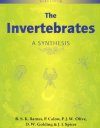By: Richard Barnes, Peter Calow, Peter Olive, David Golding and John Spicer
497 pages, B/w illus, figs, tabs
![The Invertebrates The Invertebrates]()
Click to have a closer look
About this book
Contents
Customer reviews
Related titles
About this book
Integrates a systematic treatment of groups of animals phylum by phylum with a functional approach to the various anatomical and physiological systems of the better known species.
Contents
Preface. Part I: Evolutionary Introduction. 1. Introduction: Basic Approach and Principles. 2. The Evolutionary History and Phylogeny of the Invertebrates. Part II: The Invertebrate Phyla. 3. Parallel Approaches to Animal Multicellularity. 4. The Worms. 5. The Molluscs. 6. The Lophophorates. 7. The Deuterostomes. 8. Invertebrates with Legs: The Arthropods and Similar Groups. Part III: Invertebrate Functional Biology. 9. Feeding. 10. Mechanics and Movement (Locomotion). 11. Respiration. 12. Excretion Ionic and Osmotic Regulation and Buoyancy. 13. Defence. 14. Reproduction and Life Cycles. 15. Development. 16. Control Systems. 17. Basic Principles Revisited. Glossary. Illustration Sources. Index.
Customer Reviews
By: Richard Barnes, Peter Calow, Peter Olive, David Golding and John Spicer
497 pages, B/w illus, figs, tabs
I can not recomment this book highly enough. It should be in the library of every school and university and I think all biologists would benefit from having a copy in their personal collection.--Peter Bowen-Walker, Journal of Biological Education, 2002 "This edition of a very useful text contains new research adding to our knowledge of invertebrates, and many chapters have been updated and rewritten. [...] Zoology students will welcome this new edition." (Aslib Book Guide, Dec 2001) "Essentially, this is a simple text. It aims to bring together all invertebrates and describe them in terms of their differences (phyla) and common elements (functions). Although the text needs to be precise, it is clear and the diagrams are very good. This is an excellent reference text which should find its way into field centres and school/college libraries." (TEGNews, Dec 2001) "When it comes to the invertebrates the position is much less clear cut. There are many gaps in our knowledge and so often the evolutionary relationships between the phyla are neglected. It is also a difficult area of zoology because many of the key organisms are unfamiliar ones, but in this book the subject is dealt with very clearly. It is a bold step to put it at the beginning, because there are many unfamiliar terms and concepts not covered until later in the book, but I think it works, not least because it gives the subject the importance it deserves. The book ought to become the standard text for invertebrate courses." (New Scientist, Sept. 1993) "... a good student-orientated introductory text which is attractive, liveley and informative. I am sure it will continue to be a favourite..." (Journal of Animal Ecology, 1994)


































